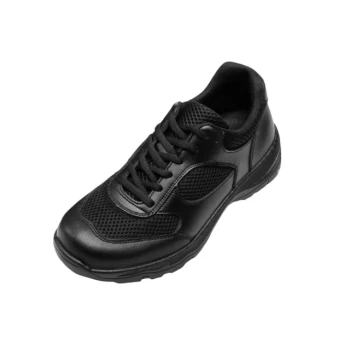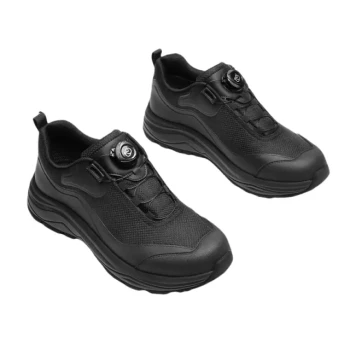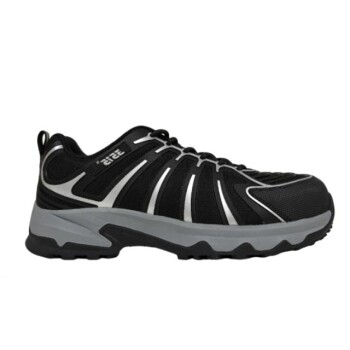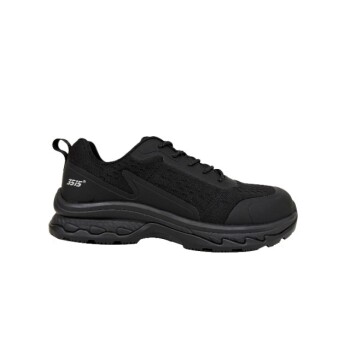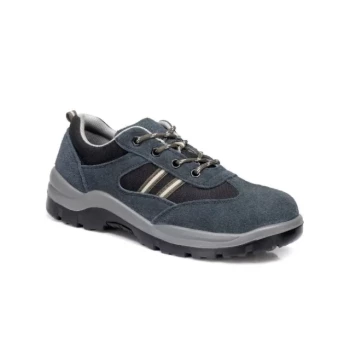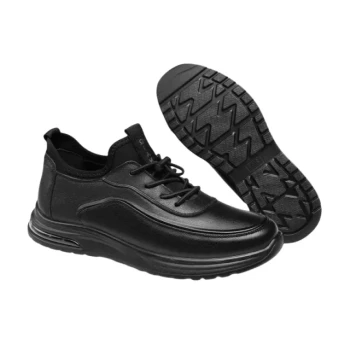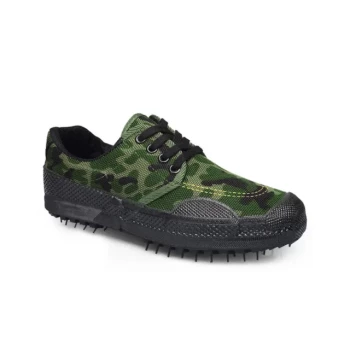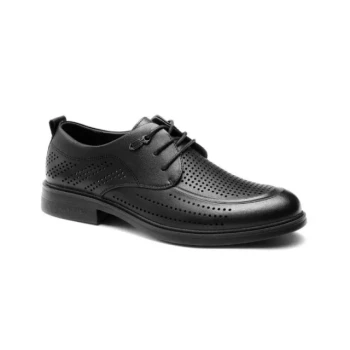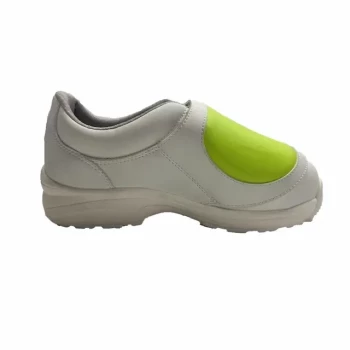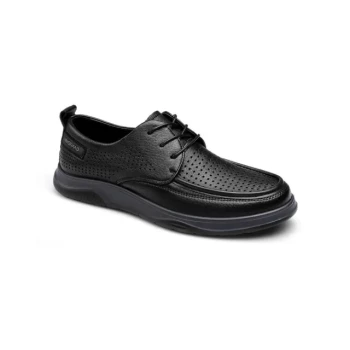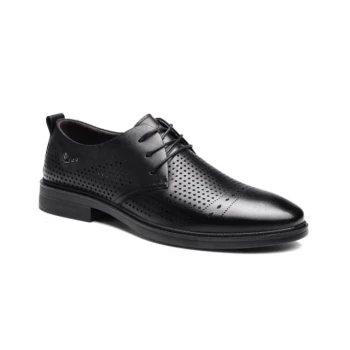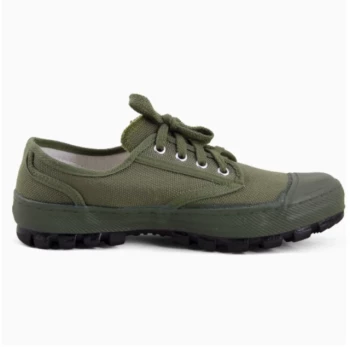To tell if your shoes are Goodyear welted, look for two key indicators. First, examine the top edge of your shoe's sole for a distinct strip of leather—the welt—with visible stitching running along its perimeter. Second, flip the shoe over and look for a corresponding stitch on the outsole that mirrors the one on the welt above.
The presence of a visible stitch connecting the outsole to a separate leather welt is the most reliable sign of a Goodyear welt. This feature isn't just cosmetic; it signifies a construction method designed for exceptional durability and repairability.
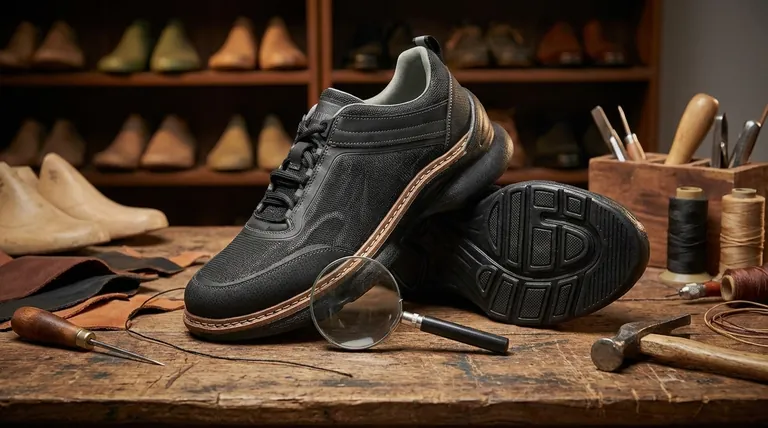
What is a Goodyear Welt?
Understanding how to spot a Goodyear welt begins with understanding its purpose. It's not just a single feature, but an entire system of construction that fundamentally changes how a shoe is built and how it wears over time.
The Core Component: The Welt
The welt is a dedicated strip of leather, typically about 1.5cm wide, that runs around the perimeter of the shoe.
This component acts as a crucial intermediary. It is first sewn to the shoe's upper and insole, and then the outsole is sewn directly to the welt.
A System of Layers
This layered construction is what gives the method its strength. The upper isn't attached directly to the outsole you walk on.
Instead, the welt joins the two major parts of the shoe together, creating a robust and stable platform.
The Final Connection
The outsole is attached to the welt using a combination of heavy-duty stitching and, in some cases, a strong adhesive for added security. This final stitch is the one you see on the bottom of the shoe.
How to Identify a Goodyear Welt
With the construction in mind, you can now look for the specific physical evidence on any pair of shoes.
Look for the Welt Stitch
Examine the shoe from the side. You should see a distinct layer of leather between the main body of the shoe (the upper) and the sole. Along the top of this layer, you will see a line of stitching.
This is the rapid stitch that attaches the welt to the outsole. A higher number of stitches per inch often indicates a higher quality construction.
Examine the Outsole Stitching
Turn the shoe over. On the bottom of the sole, you should see another line of stitching that corresponds to the welt stitch you saw from the side. This is the same thread passing through the outsole.
The Exception: Channeled Soles
Some very high-end Goodyear welted shoes hide this outsole stitch for a cleaner look and added protection.
A thin channel or groove is cut into the sole, the stitch is laid inside it, and the leather flap is then glued back down over it. You may see a faint line where the channel was closed.
Why This Construction Method Matters
The Goodyear welt was developed in 1872 for a reason. Its benefits are directly tied to its unique, labor-intensive construction.
Unmatched Repairability
This is the primary advantage. Because the outsole is sewn to the welt and not the upper, a cobbler can easily remove the old sole and stitch on a new one without ever disturbing the shoe's core structure. This allows for multiple resoles, dramatically extending the life of the footwear.
Superior Durability
The overlapping layers and dual-stitching process create an incredibly strong and resilient shoe. This method provides unmatched resistance to daily wear and tear.
A Foundation for Longevity
Goodyear welted shoes are built to last. To maximize this potential, proper care is essential. Using shoe trees helps maintain the leather's shape, while rotating your shoes between wears allows them to dry out and recover.
Understanding the Trade-offs
While Goodyear welt is a gold standard for quality, it's important to have a complete picture of its characteristics.
Higher Initial Cost
The process is more complex and requires more skilled labor and materials than simpler construction methods. This is reflected in a higher upfront price.
A Required Break-in Period
The multiple rigid layers that provide such great durability can also make the shoes feel stiff out of the box. They often require a break-in period as the leather and cork footbed mold to your feet.
Not an Absolute Guarantee of Quality
Goodyear welt refers to the method of construction. The overall quality of the shoe still depends on the quality of the leather upper, the sole material, and the skill of the craftsperson. A well-made shoe uses high-quality materials throughout.
Making the Right Choice for Your Goal
Ultimately, identifying a Goodyear welt is about understanding the value it provides for your specific needs.
- If your primary focus is longevity and long-term value: A Goodyear welt is the best investment you can make, as the ability to resole the shoe saves money over time.
- If your primary focus is maximum water resistance: The welt creates a stronger barrier between your foot and the elements compared to more direct sole attachments.
- If your primary focus is immediate, out-of-the-box comfort: Be prepared for a break-in period, or consider a more flexible construction while understanding the trade-off in durability.
By recognizing this key feature, you can make a more informed decision about the quality and lifespan of your footwear.
Summary Table:
| Identification Feature | What to Look For | Why It Matters |
|---|---|---|
| Welt Stitch | A visible line of stitching along the top edge of the sole, attaching a leather strip (welt). | Confirms the layered construction method. |
| Outsole Stitch | A corresponding stitch on the bottom of the sole, mirroring the welt stitch. | The primary sign of a Goodyear welt, enabling easy resoling. |
| Channeled Sole | A faint line on the outsole where a stitch is hidden in a groove (common on high-end shoes). | Indicates a premium finish while maintaining the welt's benefits. |
Ready to Invest in Durable, Resolable Footwear?
As a large-scale manufacturer, 3515 produces a comprehensive range of high-quality Goodyear welted shoes and boots for distributors, brand owners, and bulk clients. Our production capabilities ensure exceptional durability and long-term value for your customers.
Let's discuss your footwear needs: Contact us today to get a quote
Visual Guide
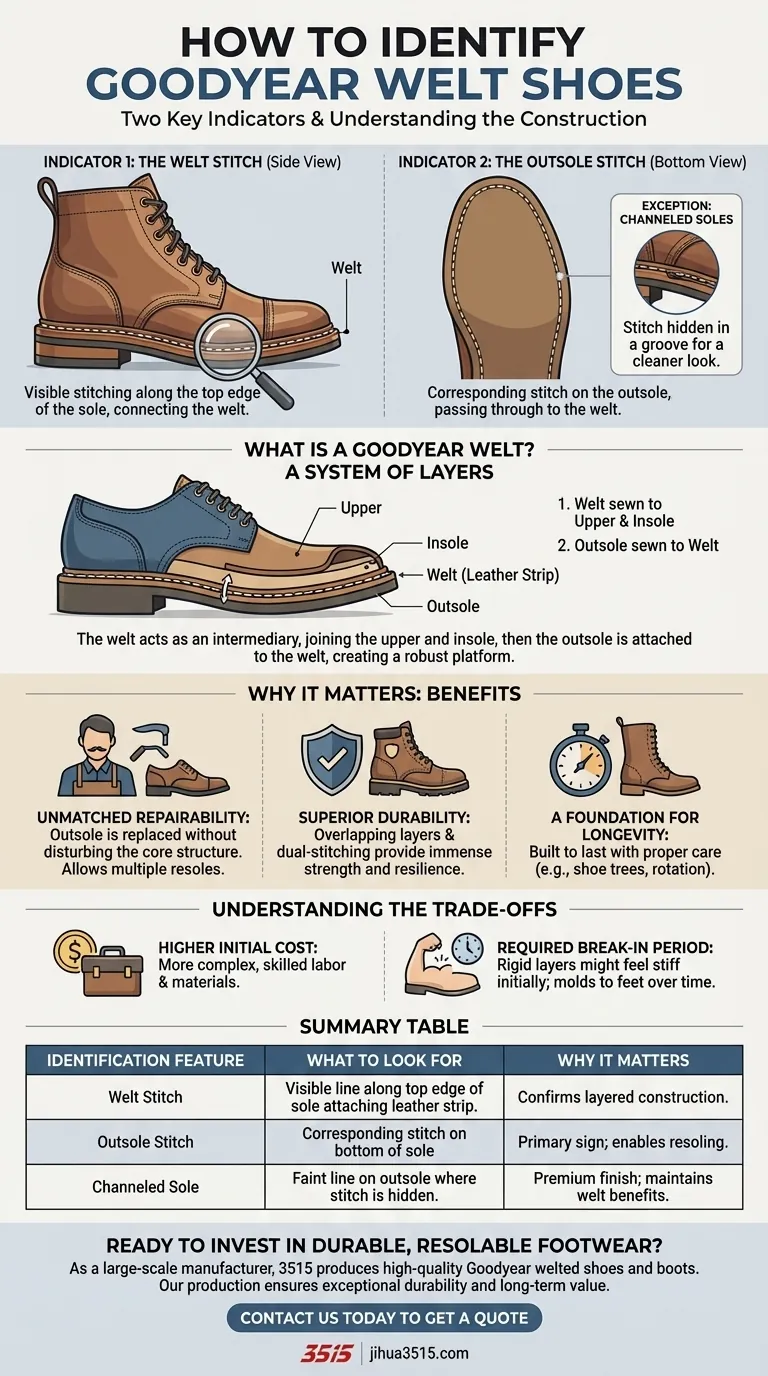
Related Products
- Wholesale Breathable Training Shoes Custom Athletic Footwear Manufacturer
- Durable Rubber-Soled Utility Shoes for Wholesale & Custom Brand Manufacturing
- Wholesale Durable & Breathable Training Shoes for Custom Brands
- Wholesale Training Shoes with Dial Lacing System Custom OEM Manufacturing
- Premium KPU Athletic Safety Shoes for Wholesale
People Also Ask
- What are the characteristics of canvas as a shoe material? A Guide to Lightweight, Breathable Footwear
- What materials are best for athletic activities in warm climates? Stay Cool with Moisture-Wicking Fabrics
- What should be considered when choosing smart trainers for business casual? A Guide to Professional Style
- What are the benefits of breathable materials in work shoes? Enhance Comfort & Health for Your Workforce
- How do non-slip athletic shoes differ from regular athletic shoes? Discover the Grip Technology


